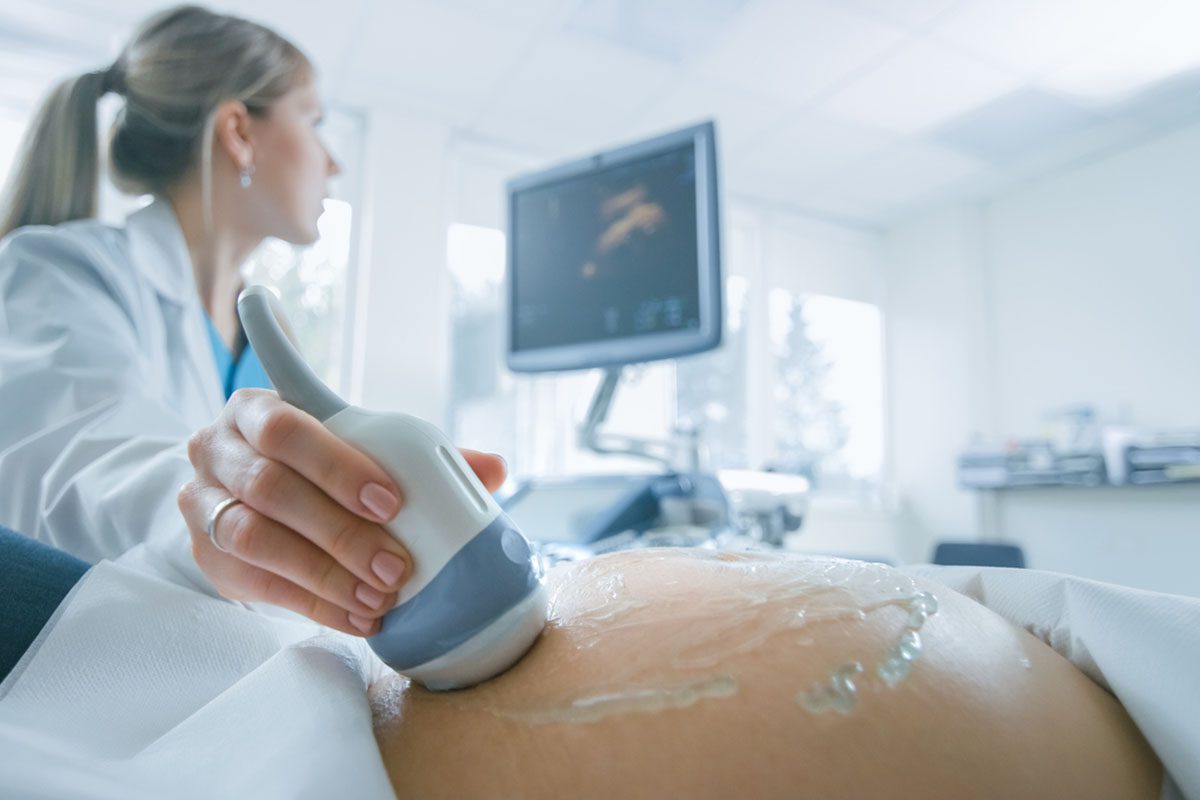J Clin Psychiatry 2021;82(6):21lr14069a
To cite: Fairbrother N, Collardeau F. High prevalence of perinatal-occurring obsessive-compulsive disorder: reply to di Giacomo et al. J Clin Psychiatry. 2021;82(6):21lr14069a.
To share: https://doi.org/10.4088/JCP.21lr14069a
© Copyright 2021 Physicians Postgraduate Press, Inc.
aDepartment of Psychiatry/Island Medical Program, University of British Columbia, Victoria, Canada
bDepartment of Psychology, University of Victoria, Victoria, Canada
*Corresponding author: Nichole Fairbrother, PhD, Room 002, Pearkes Bldg, Queen Alexandra Centre for Children’s Health, 2400 Arbutus Rd, Victoria, BC V8N 1V7, Canada ([email protected]).
See letter by di Giacomo and article by Fairbrother et al
To the Editor: We welcome the opportunity to reply to the letter submitted by Dr di Giacomo and colleagues.1 We appreciate their interesting discussion of the potential role of obsessive-compulsive personality disorder (OCPD) in perinatal obsessive-compulsive disorder (OCD) generally, and in relation to our findings in particular. They hypothesize that the very high prevalence of OCD found in our own research,2 and (although to a lesser degree) found more generally in the perinatal literature, may be attributable to increased symptoms of OCPD perinatally.
Although Dr di Giacomo and colleagues report a high prevalence of OCPD among pregnant women in their own research, and we agree that the possibility of OCPD being responsible for higher estimates of OCD prevalence and incidence is an interesting hypothesis, and one that merits further investigation, it is nevertheless unclear to us what would make OCPD the primary explanatory factor rather than one among many. We would like to highlight some of the other factors that may explain an increased incidence and prevalence of OCD in the perinatal period as was the case in our study.
Specifically, there are a number of other risk factors for OCD that may also contribute to the increased prevalence and incidence of OCD observed in general in the perinatal period, not only in our own research. For example, during the perinatal period, individuals experience many hormonal changes, which have been hypothesized to contribute to postpartum depression3 and other physiological and psychological changes.4 It is possible those hormonal changes contribute to both the emergence and resolution of some obsessions and compulsions in the first months of the infant’s life. Furthermore, increased stress and the establishment of a new attachment relationship may also heighten existing anxieties present for new mothers (eg, responsibility for harming the infant accidentally or intentionally) and lead to frequent unwanted, intrusive thoughts about those real-life worries. Those unwanted, intrusive thoughts about real-life worries can now be considered obsessions under DSM-5 diagnostic criteria, which would not have been true when using the DSM-IV.
Additionally, because OCPD is a personality disorder, it implies the presence of personality traits that are stable and long held and were present before the perinatal period. DSM-5 diagnostic criteria suggest individuals suffering from OCPD have an extreme need for control, perfectionism, and order that can result in rigid beliefs and interpersonal style.5 Again, due to the nature of personality disorders, OCPD symptoms are likely to be stable and persistent over time rather than fluctuate in association with the underlying level of anxiety (as would be true for OCD). Thus, birthing individuals for whom a focus on order and cleanliness emerges during the perinatal period only are unlikely to show the stable and persistent personality traits present in OCPD.
With respect to our own recent research2 in which we observed particularly high estimates of perinatal OCD prevalence and incidence, our perception is that other explanations are more probable than OCPD. Specifically, our sample is largely representative of the population of birthing women in Vancouver, British Columbia, Canada. In addition to proportional recruitment by health authority, we also adjusted for differences in key characteristics (ie, mode of delivery, maternal age, parity, delivery hospital) between the population and the sample via sample weighting. Given the effort we made to ensure a representative sample of the selected geographical region, we find it unlikely that birthing people in Vancouver, Canada, evidence higher prevalence of OCPD compared with other locations.
What we believe are likely to be the most significant contributors to the difference in prevalence and incidence found by our team and those reported in other publications are as follows:
- In this study, we employed DSM-5 diagnostic criteria. Several requirements for a diagnosis of OCD from the DSM-IV have been dropped in the DSM-5.6,7 Namely, it is no longer necessary that unwanted, intrusive thoughts, images, and impulses cause emotional distress, be inappropriate in content, or exclude real-life worries. In addition, it is no longer necessary that obsessions and compulsions be recognized as excessive or unreasonable by the person experiencing them. While research investigating the epidemiologic implications of these changes in diagnostic criteria has yet to be published, we suspect that they will contribute to significantly higher prevalence and incidence estimates of OCD.
- We were meticulous in our inclusion of perinatal-specific intrusions into OCD assessments. This is distinct from what others have done. To our knowledge, only 1 previous study has incorporated perinatal-specific OC symptoms into OCD diagnostic assessments,8 and in that study, the focus on these symptoms was significantly less intense than in our study.
- We also went to significant lengths to normalize postpartum harm thoughts for our participants. It is possible that participants in our study felt safer to disclose their infant-related harming obsessions because of the lengths to which we went to reassure them that their disclosures were safe.
We look forward to seeing more work in this area. We welcome work on the interplay between OCPD and OCD. Additionally, and of critical importance, are studies comparing OCD prevalence differences based on DSM-IV versus DSM-5 criteria. These data appear currently lacking, and this makes it difficult to ascertain how much the differences may have contributed to our elevated rates.
Published online: October 19, 2021.
Potential conflict of interest: None.
Funding/support: The study discussed in this letter was funded by an Operating Grant from the Canadian Institutes of Health Research (CIHR), Ottawa, Canada.
Role of the sponsor: The funding agency (CIHR) reviewed the proposed research in full, prior to funding approval. The funding agency had no further role in the conduct of the study.
References (8)

- di Giacomo E, Placenti V, Colmegna F, et al. Obsessive-compulsive disorder in pregnancy and postpartum: the possible etiologic role and implications of obsessive-compulsive personality disorder. J Clin Psychiatry. 2021;82(0):21lr14069.
- Fairbrother N, Collardeau F, Albert A, et al. High prevalence and incidence of obsessive-compulsive disorder among women across pregnancy and the postpartum. J Clin Psychiatry. 2021;82(2):20m13398. PubMed CrossRef
- Soares CN, Zitek B. Reproductive hormone sensitivity and risk for depression across the female life cycle: a continuum of vulnerability? J Psychiatry Neurosci. 2008;33(4):331–343. PubMed
- Duarte-Guterman P, Leuner B, Galea LAM. The long and short term effects of motherhood on the brain. Front Neuroendocrinol. 2019;53:100740. PubMed CrossRef
- American Psychiatric Association. Diagnostic and Statistical Manual for Mental Disorders. Fifth Edition. Washington, DC: American Psychiatric Association; 2013.
- American Psychiatric Association. Diagnostic and Statistical Manual for Mental Disorders. Fourth Edition. Washington, DC: American Psychiatric Association; 1994.
- American Psychiatric Association. Obsessive-compulsive and related disorders. In: Diagnostic and Statistical Manual for Mental Disorders. Fifth Edition. Washington, DC: American Psychiatric Association; 2013.
- Martini J, Wittich J, Petzoldt J, et al. Maternal anxiety disorders prior to conception, psychopathology during pregnancy and early infants’ development: a prospective-longitudinal study. Arch Women Ment Health. 2013;16(6):549–560. PubMed CrossRef
This PDF is free for all visitors!





